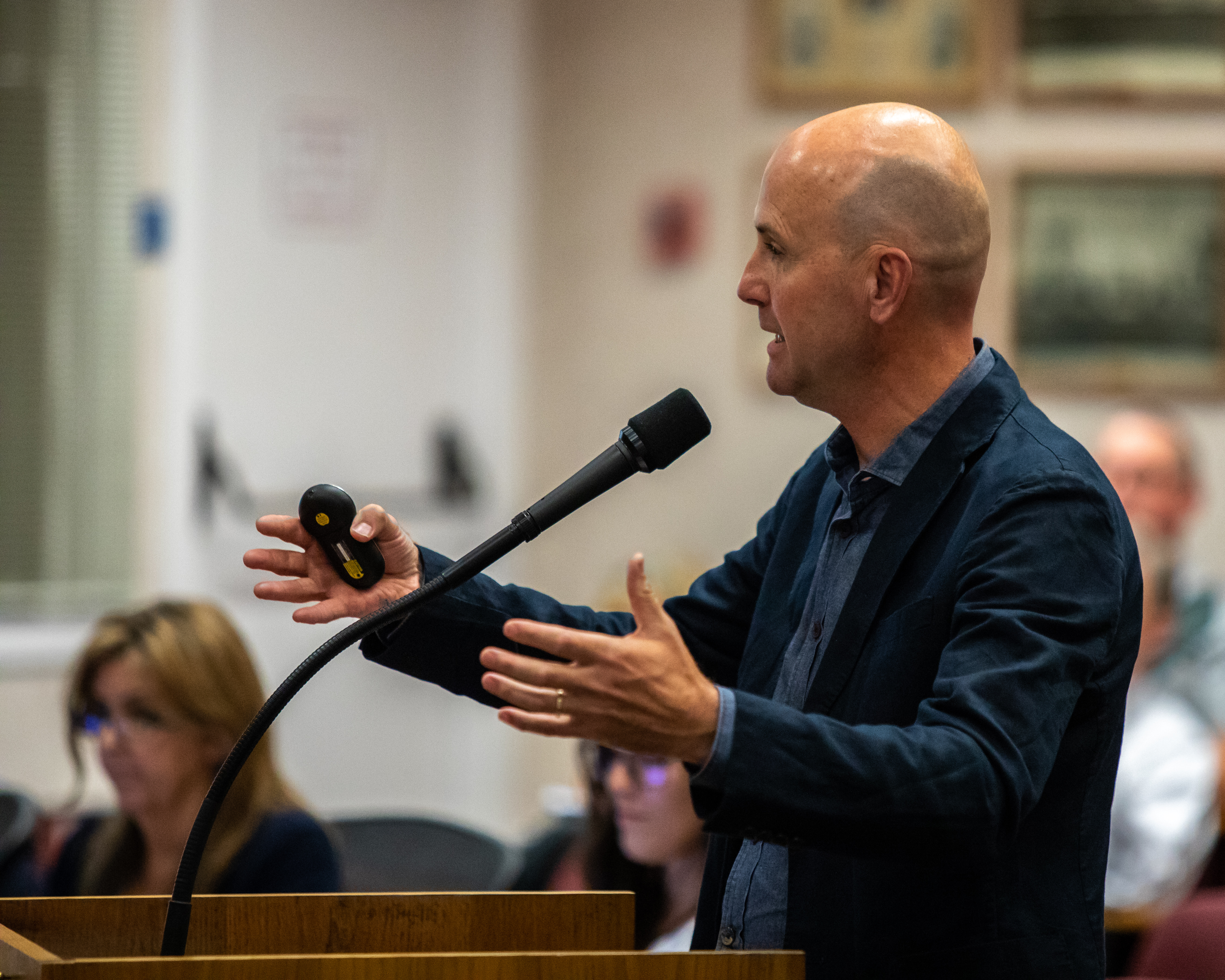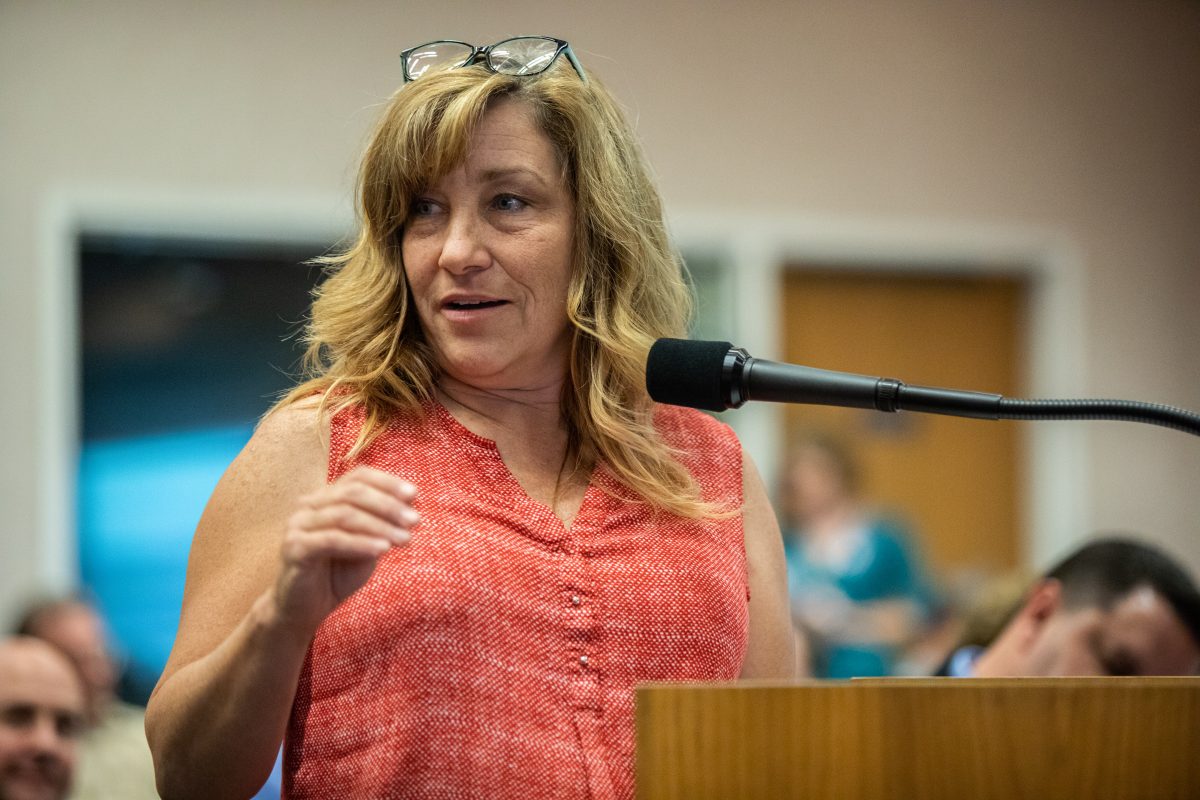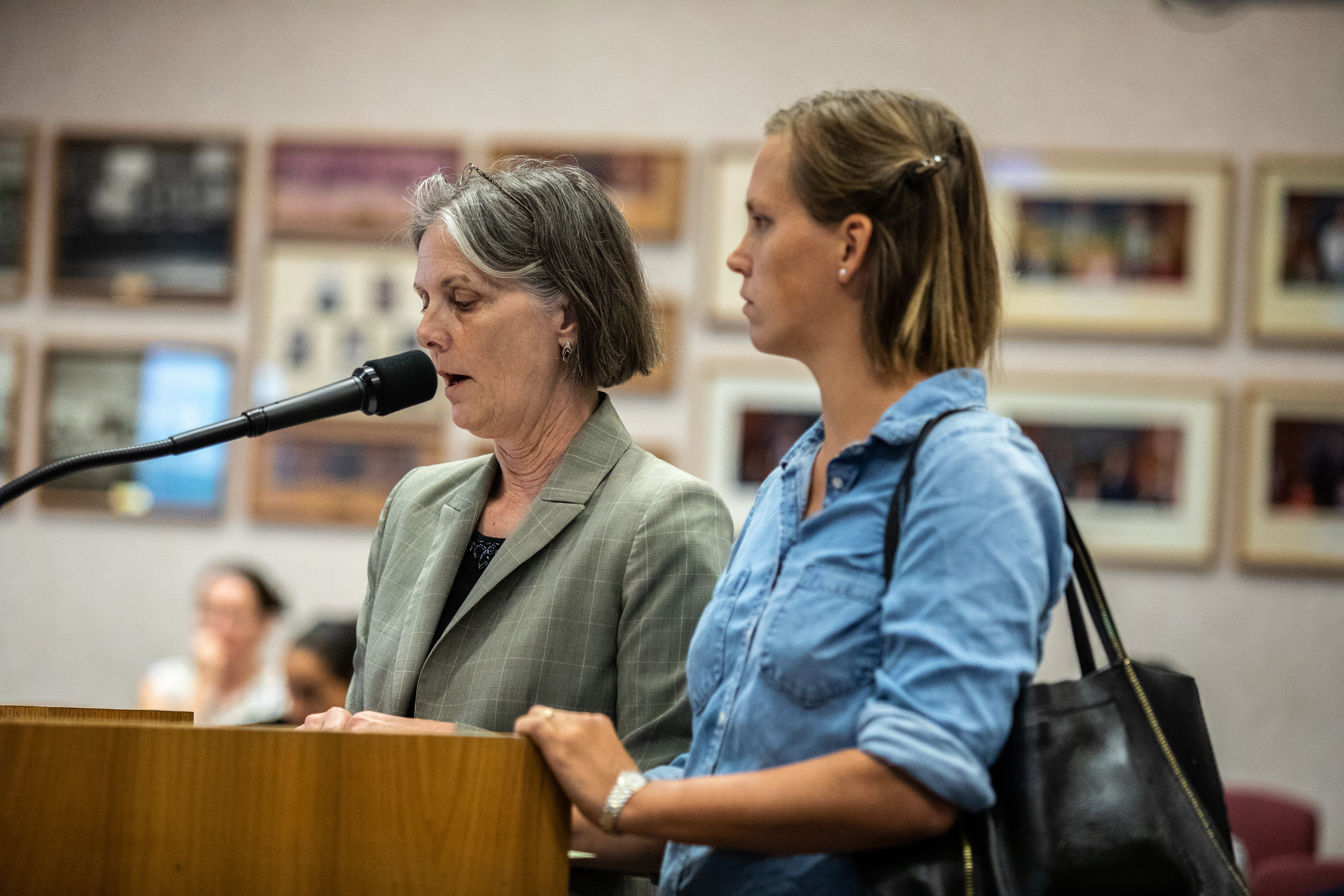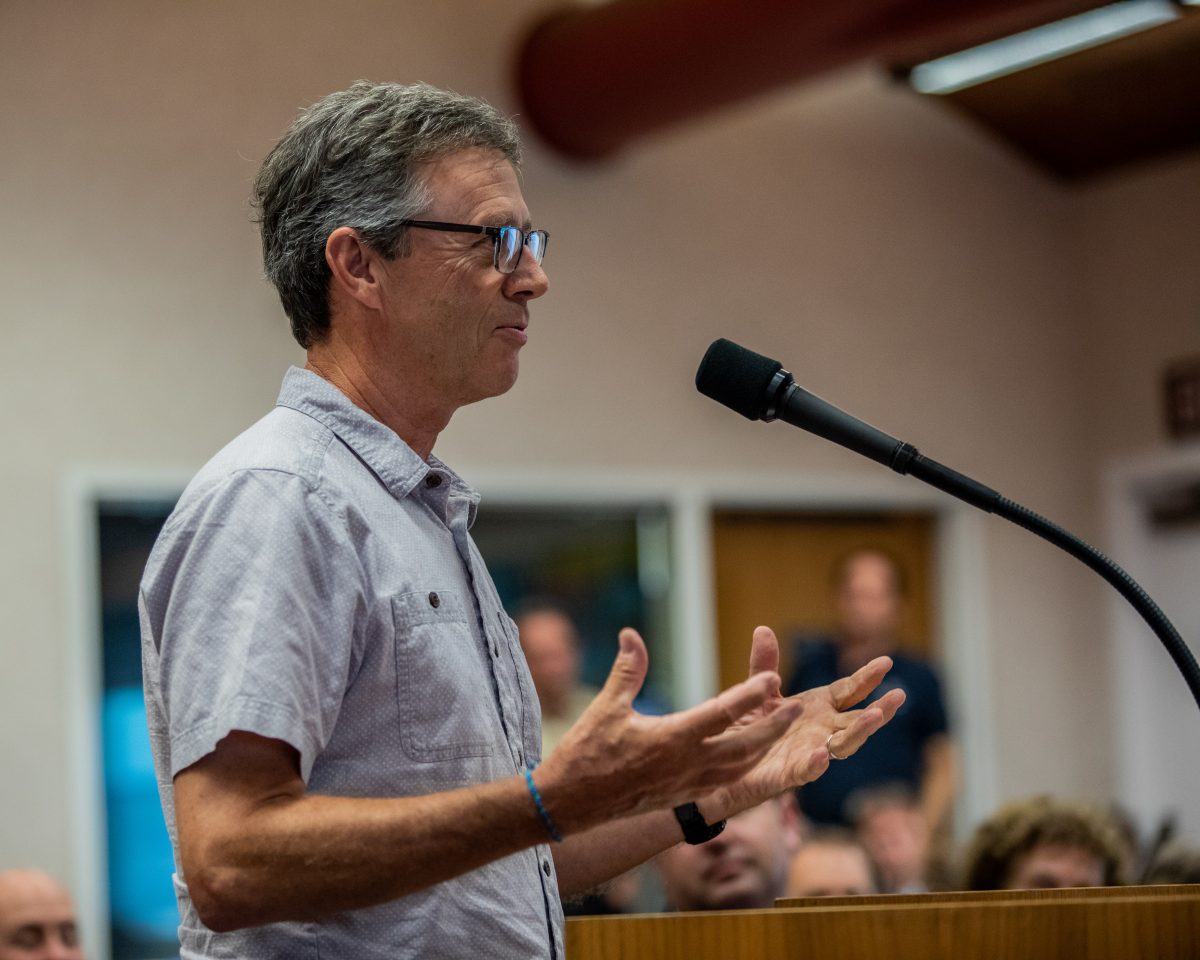
The Davis City Council on Tuesday night received their first update on the Downtown Plan – there was a clear push for things like mixed use and residential in the core, as well as a push for sustainability to make Davis a “bold” “cutting edge” “global sustainability” leader. But there remains concern about how the city will get from where they are now to these bold and sometimes lofty goals.
Dan Parolek of the consultants, Opticos Design, laid out a lot of the concepts that we have presented over the last several months. He pushed what he called “incremental evolution” and explained, “This is not going to happen overnight… It’s going to take time.”
With regard to economic development, he said the big concept supported across the nation is the notion of “placemaking.” So instead of focusing on a big move or development, “The idea is to focus on  making changes that create a high quality place, remove barriers for those things that need to happen to make those high quality places, that will generate economic development, it will bring businesses, it will retain existing businesses, allow them to prosper and continue to evolve.”
making changes that create a high quality place, remove barriers for those things that need to happen to make those high quality places, that will generate economic development, it will bring businesses, it will retain existing businesses, allow them to prosper and continue to evolve.”
The strategies that they are suggesting are: reinforcing the time and risk for developers by giving them a clear path through entitlement; leveraging city-owned property; public-private partnerships that might be necessary to plant the seeds for some of these changes; and investing in public improvements.

Michelle Byars, the Vice Chair of the Downtown Plan Advisory Committee (DPAC), laid out eight goals that they came up with.
First was “we believe that the addition of residential opportunities in the downtown will serve our community and the adjacent neighborhoods well.”
The DPAC “is generally in support of increasing building heights in appropriate parts of the downtown to allow more residents.”
Second, “We are convinced of the need for predictability for projects for the benefit of both the neighborhood and the businesses.” She said that they “are striving to help the consultants as they formulate the form-based codes intended to provide this certainty.”
Third, “We support the idea of universal design being incorporated right from the beginning, both in the formal sense of being a minimal requirement but going even beyond that and becoming a leader in universal accessibility.”
Fourth, the DPAC “recognizes that it is essential that our final plan be financially viable – both for the city and for the businesses.” There is a need for more attention to an economic development strategy for downtown.
Fifth, sustainability – “It has been expressed by the citizens and DPAC as a desire for Davis to do something bold, cutting edge, and to be a global sustainability leader.”
Sixth, to “prioritize parking management before adding new parking.”
Seventh was “we see a need to create a downtown center.” They support the consultant’s current recommendation to accomplish this by expanding the E Street Plaza.
Eight, “The DPAC fully supports creating a stronger sense of hierarchy or distinctiveness in our downtown streets.”
She also said they are aware of the concerns expressed by the Planning Commission. They support the change requirements that bank branches be located downtown and they support a modification of the fee structure to encourage rather than discourage small housing units in the downtown.

Councilmember Dan Carson, during his comments, supported the notion of housing in the downtown. “If we can bring additional housing to the core downtown that has a great lack of housing compared to comparable cities like us – you bring people, you bring economic activity.
“I think what investors fear most is uncertainty,” Councilmember Carson stated. “If through our re-writing the codes, we can mitigate some of the great confusion but just how do you navigate the planning process to build anything downtown and do set up clear rules about what you can build… and clear demarcations about what you don’t want.”
City Manager Mike Webb stated, “With the form-based approach to things, there’s an element of durability to zoning, to the approach, as uses ebb and flow over time, as market conditions adjust over the decades, the form-based approach gives some resiliency to those changes.”
Councilmember Lucas Frerichs stated, “The downtown is the heart of this community… Everyone agrees that downtown is a place that everybody cares about.
“It’s an inspiration to think of what it all could be, in addition to everything that exists,” he said.
“This is a status update,” he said. “There’s still a fair amount of additional steps to go. We don’t have all the answers yet.”
He agreed with others that “additional housing in our downtown is important for economy.” He also noted that it was important for our environmental goals. He supported the call for the need for affordability, stating that “it’s something that’s a nut that we need to crack.”

Councilmember Frerichs said that placemaking is not just a good economic development strategy, “it’s also just a good strategy irrespective of economic development.”
Finally, with respect to transportation issues, he pointed the grant funding already secured for an overcrossing from Pole Line to Olive Drive and he is hopeful for one that connects Olive Drive to the Davis Downtown.
Councilmember Will Arnold said, “My biggest question I think is the biggest question that remains for everyone – how do we get from here to there? That seems always to be the central question when we do these type of plans.
“The simplest way to explain how do we get from here to there from where I stand – have the city help where we can and get out of the way, elsewhere,” he said. “That’s almost the best we can do for the downtown as well.”
He, like others, wants to alleviate some of the “procedural hindrances to redevelopment in the downtown.” “We ought to prioritize those,” he said. “They can certainly make projects more viable in the downtown.”
He sees a conflict between those wanting to incentivize redevelopment and mixed use in the downtown and those wanting to ensure the highest levels of sustainability and affordability.
“Those – if you’re investing in a project – just look like dollar signs,” he said, while noting they have long been goals for many in the community including himself. “If it makes sense anywhere to incentivize folks doing mixed-use development, it would be my opinion that the downtown is where it makes sense. So that is a balancing act.”
Gloria Partida said simply, “I support this. I don’t have a whole lot of concerns right now because I realize this is just a check in, I’m going to wait to see what the next level is. I’m very happy with the direction.”
Mayor Brett Lee pushed on affordable housing, noting “some of that can be by design rather than big ‘A’ affordable housing.
“One of the things that is really important for people to understand is where we are today,” he said. “Where we are today is zoning and ordinances that are outdated for the downtown. When things come before the council, it really is zoning by exception. There is no certainty… It’s discretionary… There is no coherent plan, there is no vision.”
He called this “the remnants from a decades-old vision which is not appropriate in today’s world.”
Mayor Lee added, “I’m not as worried as some in the community about how we get from here today to some future vision.”
—David M. Greenwald reporting







Ya THINK ???!!!
Years ago an old boss told me that it is not a “goal” unless it has a specific step by step plan.
When a city talks about a new “vibrant mixed use zero net carbon downtown” without any specific plans to get there it is really just a bold and lofty “dream”.
P.S. Alan really was at his best yesterday and I thought of a new ad campaign for the Vanguard that says “Come for the race-baiting posts by David Greenwald, but stay for the wisdom in the comments section from well-respected Davis elder Alan Miller”…
Not respected by the Vanguard. Most of my posts have been pulled for the last two weeks, without any overall change in my posting content. No respect for my awesome wisdom. Just the Vanguard tightening its sphincter.
And thanks for the compliment 😉
A continuation of the “lie” that this is about economic development (and not simply about adding more residents to the city).
Let’s get this straight – Davis doesn’t already have enough folks to support its downtown? There isn’t already an existing imbalance between commercial and residential development? And yet, some folks want to change the remaining commercial area, to a semi-residential area by claiming it will facilitate commercial development?
That’s called a “lie”. If you want more commercial and/or office space, then why not accommodate that? (Assuming there’s even demand for it.)
Oh, well. At least it’s more difficult for developers to wreck downtown, than it is for an undeveloped piece of land. Therefore, it will likely be a slow process.
The goal is to increase the total commerce in the district. That means taller buildings that add commercial (ie, office space) above the ground floor, possibly increasing retail space on some parcels, and adding some residential which helps to support the businesses by having more people living near the businesses.
The only real way to do that is by going to taller buildings with more floors. It’s not a “lie” and I’m not sure why you keep saying this. It’s basic urban planning of the last several decades (nothing new here).
I think this topic isn’t getting much traction because there is no specific project in front of the public to demonstrate how it works. But the Chen Building is a good example.
Again, this argument assumes that there (suddenly) isn’t enough people in Davis to support its existing downtown. Even as residential growth has continued, while downtown hasn’t expanded.
And, even while other commercial spaces outside of downtown are converted to housing.
There’s something dishonest about the claim that the way to “save” downtown (as if it needed saving) is by increasing the imbalance of housing/commercial development in the city. (Which is already a problem.)
This effort is about adding more housing (and to some degree, compromising existing commercial space), and not about increasing commercial development. Why not just acknowledge the truth?
Again, why not accommodate more commercial/office space, if that’s actually the goal?
No, it’s about increasing revenues from the same square footage by increasing the uses there.
It’s not a zero-sum game. If there are viable proposals for commercial development on other lots, those could certainly also go forward.
Nobody is being dishonest, Ron. This is standard urban planning practice. The ‘imbalance’ is not the issue. It’s increasing the revenues from the area.
You keep repeating this, but it isn’t true.
But they’ve analyzed it and studied it and you haven’t
Ron said . . . “Again, this argument assumes that there (suddenly) isn’t enough people in Davis to support its existing downtown. Even as residential growth has continued, while downtown hasn’t expanded.”
Ron, if I read your words correctly, you are defining “enough” in terms of the total number of people (total population) in Davis. My personal beliefs are that that single-threaded view does not accurately reflect the reality Davis faces. First, I believe the total population needs to be segmented into a relatively small number of “demand cohorts.” Second, “commercial” also needs to be segmented into a small number of “supply cohorts.”
The reason for that segmenting is pretty simple. For the most part children from the ages of 0-17 have no disposable income of their own, so they generate no direct “demand” for goods and services that can/will come from the goods and services businesses that occupy the commercial space. They do generate indirect “demand” through the parents they live with. So my question to you is, is there “enough” population in the ages 0-17 population cohort?
Young adults aged 18 and 19 are a mixed bag. Some are still living at home and some are living in other cities going to college. Some are students at UCD, whose “home” when they are not in school is not Davis. Some have modest incomes of their own, so they do generate “direct” demand for goods and services. Here-too one can ask, is there “enough” population in the ages 18-19 population cohort?
Young adults aged 20-24 are for the most part college students. Almost all of them have have a measure of disposable income, so they generate “direct” demand for goods and services. Is there “enough” population in the ages 20-24 population cohort? A second question for this particular cohort is what is the high level mix of goods and services the members of this cohort purchase locally? As a first pass, I suggest that goods and services be segmented into four groups (1) consumable goods (groceries, etc), (2) non-consumable goods (clothes, electronics, hardware, building supplies, etc), (3) consumable services (restaurants, coffee shops, ice cream parlors, etc.), and (4) non-consumable services (banking, legal, medical, professional, etc.)
For the purposes of this discussion, I will call population aged 25-54 the “child-rearing years” cohort. They clearly generate substantial direct demand for goods and services. Is there “enough” population in the ages 25-54 population cohort?
Then there are the adults aged 55 and over with a substantial amount of disposable income that generates direct demand for goods and services. The question that one has to ask for this cohort is what is the mix of goods and services? Is there “enough” population in the 55 and over population cohort? And for for this particular cohort, what is the high level mix of goods and services the members of this cohort purchase locally?
Young adults aged 20-24 are “for the most part college students” only if they come from rich families with well educated parents, nationwide less than 20% of 20-24 year old adults are full time college students (that may seem strange to many in Davis that can’t name a single friend or relative that was not in grad school at 24)…
Looking back to when most boomers were coming of age the population aged 25-54 sure was the the “child-rearing years”, but not so much today (especially in high cost areas like Davis) when I’m betting that DJUSD had more parents over 54 than under 25 (I read a while back that “most” guys are now over 30 when their first kid is born and 10% are over 40.)
Hey Ken – I can fix your ignored poster problem, but to do so I will have to logged into your account which will give you an ugly password. Let me know if that’s okay.
Ken, why would you bring up that national statistic as relevant to the 20-24 year-old population cohort in Davis?
Ron
The downtown WILL accommodate more commercial/office space. However, to do that financially requires that it NOT be 100% commercial/office space. In addition, retail is dying downtown because people are not coming downtown. I spoke with Matt Kowta at BAE about this issue. Also, there is little tourism downtown.
If you have a different solution, then you should prepare a well thought plan that is well documented and researched. Instead, we’re only seeing an assertion that is unsupported in any way.
More on how economic activity in the Downtown has declined since 2008 from BAE.
“Taxable Sales Trend • Inflation adjusted downtown taxable sales declined 4% between 2008 and 2017 • Downtown was about 20% of citywide in 2017; down from about 28.6% in 2008”
It has not just been the “last several decades” it has been the “last several centuries” that the western world has had mixed use downtowns with office, retail and residential in the same buildings, Don is correct when he says “nothing new here”…
Get this straight the council, consultants and DPAC are all lying. All the folks you have studied these issues don’t know what they are talking about. And you who haven’t know better. Do I have that right?
One might have to examine the interests of the consultants, to determine where they’re coming from. They may be responding to the demand for more housing.
Regardless, have they (or anyone) responded to the points I brought up)? Or, are you simply stating that we should rely on consultants/experts (e.g., in the same way that the Nishi air quality expert was “listened” to)?
I recently posted an article regarding a brand-new mall in San Francisco, which is failing. (Despite all of the new residents.)
Have you done that?
Actually, you’ve posted that several times. It has almost no similarities to the Davis market.
Maybe Ron can explain what he means by the interests of the consultants. That’s kind of an odd concept to begin with. But the consultants seem in line with the DPAC and the Council. So it seems broader than just the consultants to begin with.
Questions that come up:
1. Does Ron believe everything is fine in the downtown?
2. Does Ron believe that the downtown should simply be one story restaurants and bars?
3. Why is Ron opposed to mixed use in the downtown?
4. Where does Ron believe the city of Davis should build house or does he oppose all new housing?
Craig I think you have pretty much summed up Ron’s position on any new development in town (or just outside of town requiring a vote).
Other than Ron I don’t think anyone else in town thinks that the people living in new apartments and condos over retail downtown will not be a huge boom to the city and local economy (LOTS more Jobs, Property Tax Revenue, Business Tax Revenue and Sales Tax Revenue)…
Ken A
I can think of about a half dozen other folks over at the Davisite/Flatlander that agree with Ron…
Ron – you have invested quite a bit of digital ink in opposition to almost every project or idea related to city economic development and growth. You are certainly not alone in this town, but you seem more extreme in opposition.
Do you really think it is reasonable to demand that a city like Davis not change? Just curious… because I cannot wrap my head around this type of vision. There are many towns throughout the country that are not changing, but not those located in a growing region with a growing university. I am beginning to think that you made a big mistake moving here believing it was something that is not.
Can you describe your vision for Davis in 20 years down the road? How will it pay for its roads etc.?
The other “unique” thing about Davis is that it hasn’t allowed its downtown to die (so far), as almost every other city in the valley has done. It’s accomplished this by preventing big-box, peripheral development (which has its own challenges, in cities that have allowed it).
The consultants may be more used to the situation in which cities have allowed their downtowns to die, and are not coming back due to peripheral big-box developments. This is not the case, in Davis. Davis’ downtown takes on a greater importance, in this context.
I won’t have time to fend off the development activists, today. But, if you want (yet) another example of the city disregarding the advice of consultants (in addition to the air quality expert for Nishi), one need look no further than the consultant’s fiscal analysis for Nishi 1.0. (“Fortunately”, a consultant was not used for Nishi 2.0.)
Seems like the only consultants that the city listens to are those who support developments, particularly housing developments.
So you’ve researched who these consultants are?
Ron – you should take a look at some of the other downtowns Opticos have worked on – they come highly recommended.
Ron
You’re wrong about our downtown not dying. While it does have a more vibrant nightlife at the moment, the other retail outlets are leaving town and cannot afford the rents because they don’t generate enough revenue. We are anticipating that the situation will continue to get worse and that we need to develop an alternative approach. And in fact, the only downtowns that are vibrant are the ones that have proactively upgraded. If we try to stand still, we will die.
Wait . . . WHAT? If that is happening, why is building more retail space, which will undoubtedly need much higher rents, needed? Honest question. I say this as someone who is in favor of scraping some of the bland one-story buildings downtown and putting up 3-4 story mixed-use.
It is not immediately clear that this would be about building more retail space. It sounds more like creating a different mix, bringing more people into the downtown, but retail space is generally limited to the ground floor.
OK, makes sense.
David wrote:
Yes, David, that is about what it sounds like, and I think that’s why we heard so much frustration and criticism coming from the Planning Commission debrief.
Some people might describe “bringing more people into the downtown” as a strategy, but most would probably describe it as a goal.
The difference is critically important for any meaningful discussion – for a strategy, by definition, must be comprised of measurable actions and milestones and supported by necessary and sufficient resources. Google definitions offers one example as:
The point being, a strategies are most often complex, intricate, well-conceived, peer vetted – as if your life/company/family depended upon it – and supported as required to achieve the desired results.
Bringing more people into the Downtown is easy to say, but let’s explore what that means in practice. If we want more tourism, perhaps more accurately “some tourism” – we will need to conceive a compelling, destination identity and value proposition for prospective visitors, and then be prepared to market it accordingly. And, yes, if we are successful in that initiative – we will likely need to address the need for more parking. It’s not complicated – just do the math.
If you employing a strategic approach to achieving this goal – you would typically go about the process – as Commissioner Boschken suggested – beginning with a SWAT analysis focused around the original premise.
The same is true if you are sincere about bringing more young working professionals or downsizing seniors into the Downtown as a new class of “permanent residents”. What does it take to actualize that type of transformation? Seriously, where will the new jobs be situated to support market rate apartments and condos? Are you going to go for “commuters” (preferably carless commuters) – if so, what is to be their means of reliable/affordable public transit? Seriously, what is the plan? Are you going to advocate for a measurable increase in the number and quality of “market rate” jobs located in the City of Davis? If so, they need places to park their logos and the process of recruitment will require significant additional investment in marketing to these companies – including maybe something like a “professionally produced relocation publication” that most cities have at the front desk of City Hall?
Just saying, it’s certainly possible to move from a “stated goal” to an operational strategy, but that type of planning and operational execution has not been a hallmark of our past approach to capturing the high ground – particularly when the discussion pivots to Economic Development.
John D.
Good points.
Keep in mind that the Core Area Specific Plan is about zoning and not about economic development. That’s a key reason why there isn’t a plan on how to get from here to there. Zoning sets the parameters for what are acceptable building forms and arrangements, while economic development plans set out how to fill those buildings. The City needs to reset its economic development plan given then it has largely rejected the last plan when asked to implement key elements. (I’ll have forthcoming thoughts on one vision for a plan.)
Since most retailers, coffee shops and restaurants pay a lot more in labor than they do in rent it is going to be interesting how the increase in the CA minimum wage from $8/yr five years ago to $15/yr less than 5 years from now has an effect on the number of business in downtown Davis…
I can tell you the answer to that: some local businesses, statewide, will die. Already in the first three months of January at least 10 business (mostly restaurants and coffee shops) that I frequented in Sacramento and Berkeley cut their hours by 1 – 5 hours per day. Of those I’ve actually talked to the managers about because I was able to visit in their more limited hours, ALL cited increased labor costs, one manager added: “Survival!”.
All of these were small, local businesses, and I don’t think most of them can withstand four more of these increases. Even the baristas at one business were lamenting at how every place they went to had their prices going up — so what was gained? Price increases, less hours for workers (or less workers), and eventually we are going to kill small local businesses en masse in this state. G-d D-mm*T you people who think you can social engineer the labor market are deluded *ss hats. You are driving out small business, which is the cherry of true capitalism, which means one thing: MORE STARBUCKS.
Agree 100%
Ironically, economic growth is causing an increase in wages as business is competing for employees.
But the minimum wage is a starting wage. It is meant for young people starting their career, not the large herd of 20 and 30-sometthing liberal arts majors with $80k in student loan debt and no marketable skills other than in food service.
The one demographic that needs a boost is the single mother lacking a college education. But the boost should be to help her rise out of the starting wage arena, not to destroy the starting wage arena because of her.
The problem is that the minimum wage no longer covers just jobs that were filled by those just starting their work careers. Too many middle-aged and older people are trapped in jobs near the bottom of the wage scale with no real prospects for getting out of that situation. Meanwhile, the corporations employing them are returning record investment returns to their shareholders. This is an explicit shift in wealth from lower to higher income households through excessive capture of economic rents from labor. The flourishing of private-sector industrial unions was an effective deterrent to this inexorable force in capitalism, but that has largely disappeared much to the detriment of the American workforce. We need to find other solutions to this market failure (and I generally believe markets are better than resource allocation than government-directed rationing.) To argue that somehow capitalism is perfect and that nothing should be done to mitigate its worse aspects is to stick one’s head in the sand and to invite either eventual revolution or oligarchical authoritarianism.